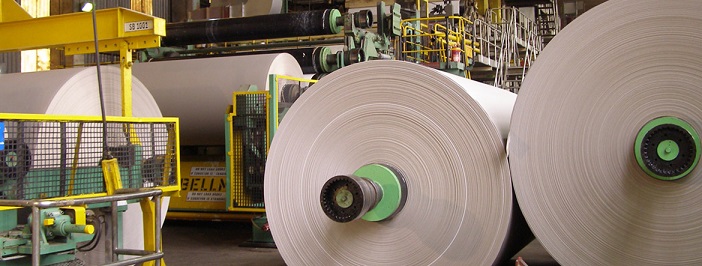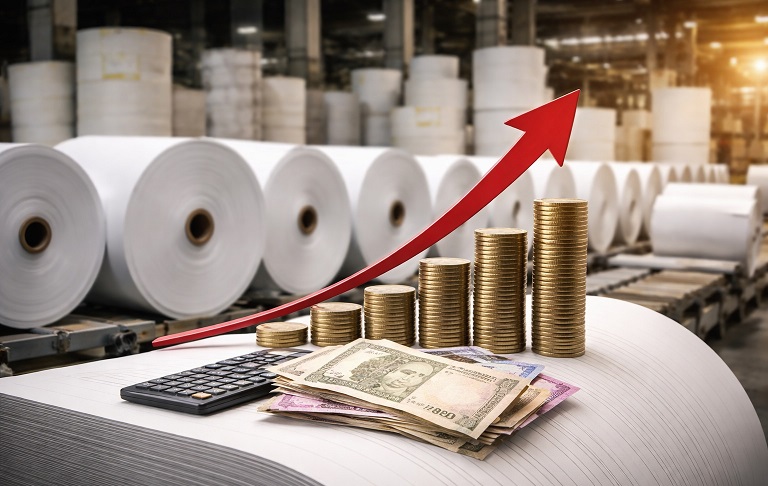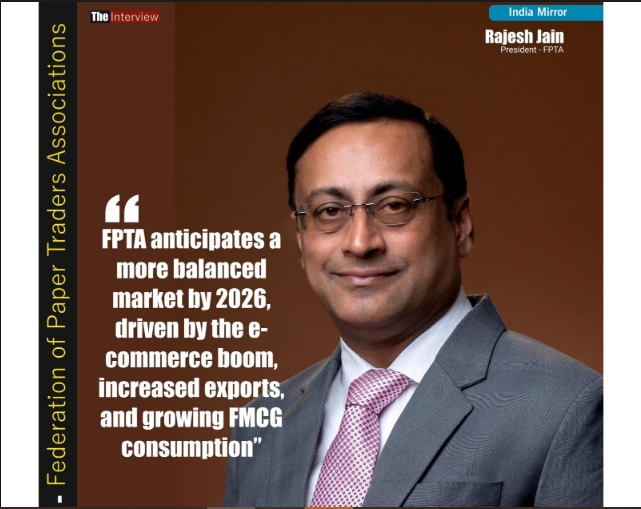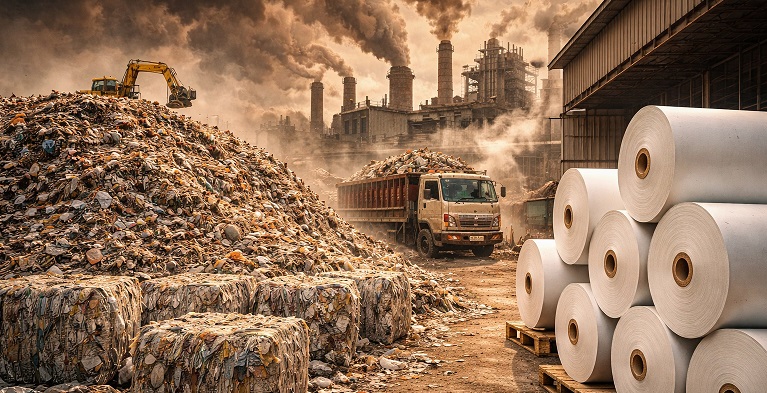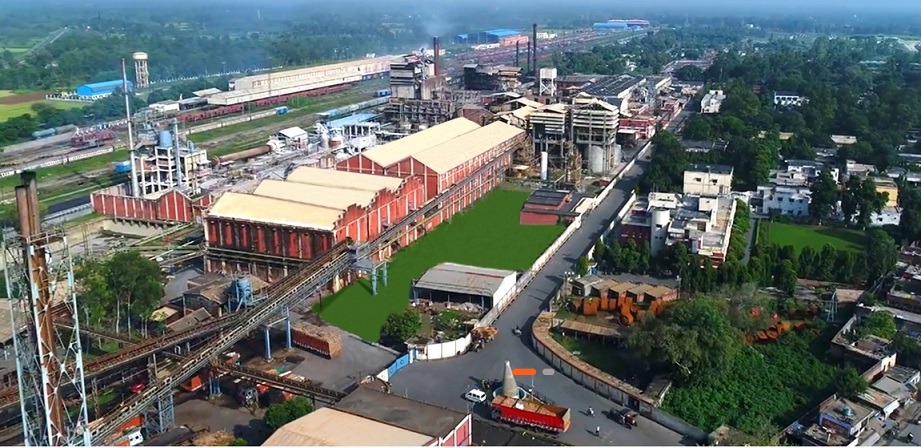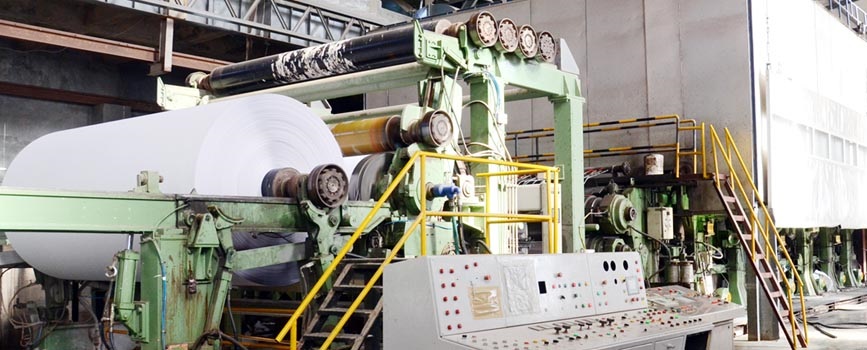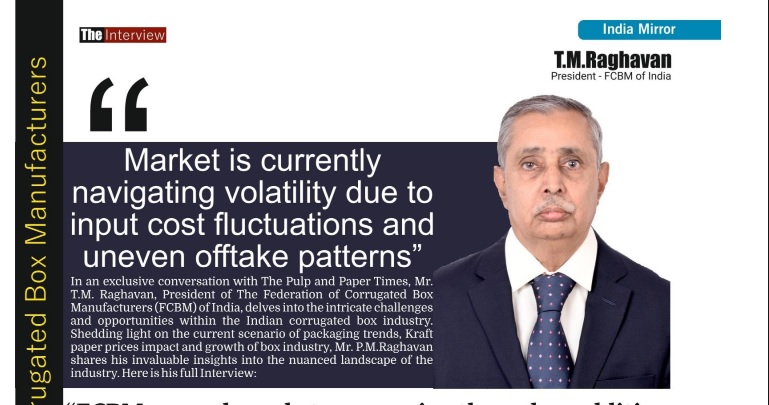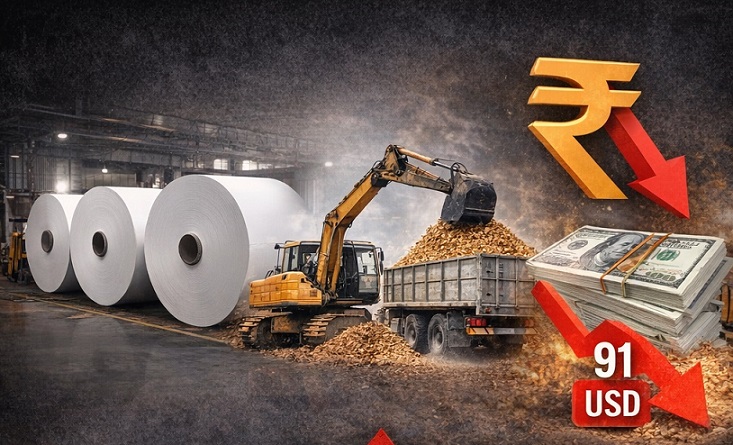BIR: China had been replaced as the leading buyer of European recovered fibre by Indonesia, India and Turkey
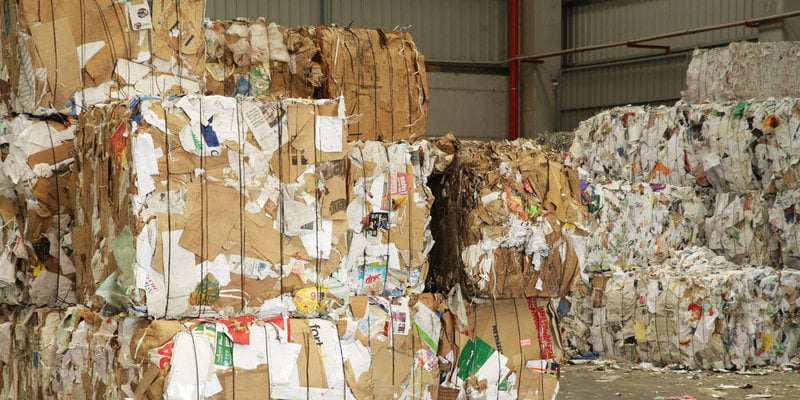
BIR: China had been replaced as the leading buyer of European recovered fibre by Indonesia, India and Turkey
The Bureau of International Recycling (BIR)’s Annual Report 2023: Key Points
- India where a surge in domestic mill production capacity from 14 million tonnes at present to more than 20 million tonnes by the end of the decade.
- Middle East’s annual recycled containerboard production of 4 million tonnes creates an ongoing requirement for quality fibre
- total volumes shipped from Europe to Asia actually increasing 12% in 2022
The Pulp and Paper Times:
Year 2023 had brought an abrupt change of momentum after positive early demand for recovered fibre was suddenly replaced by lower orders as mills were hit with the double-whammy of high energy costs and reduced demand for their finished products owing to spiralling interest rates. The difference in 2023 was that the year was challenging from the outset and remained that way for the entire 12 months, thereby testing Recovered Paper industry’s renowned adaptability and resilience.
On the commercial front, collection volumes were under pressure and demand from mill customers was short of what many of Traders would have wished. Even in the USA, where OCC and mixed paper prices were on a rising trend for most of 2023, the upturn was largely driven not by increased demand from the mills but by buyers’ nervousness over fibre availability.
So what of exports to Asia? China has been fighting its own battle with low consumption and a lack of orders for finished products. But long gone are the days when large parts of the world relied so heavily on China to absorb recovered fibre surpluses. India and Indonesia, among others, have become key Asian outlets for Europe’s exports – but even this steady business was to suffer a jolt in late 2023 following the launching of attacks on commercial vessels in the Red Sea region. Import procurement plans for many buyers in Asia had to be thrown out of the window while suppliers in Europe and the USA were faced with diverted vessels, significantly longer transit times and huge increases in freight costs, not to mention risks of cancelled orders and revoked vessel space bookings.
There were suggestions from some quarters that the freight rate increases and surcharges imposed in response to the attacks were at best opaque and at worst excessive. What can be said with certainty is that our industry always remains vulnerable to geopolitical and commercial forces beyond our control – even though our industry is regularly lauded as the spearhead of the circular economy.
“It cannot be repeated too often that free and fair trade in recovered fibre is the lifeblood of our environmentally-essential industry. Our two meetings at BIR Conventions in 2023 served not only to underline this point but also to stress how international flows have been changing in recent times, not least because of China’s altered import rules” says Mr. Francisco J. Donoso, DOLAF Servicios Verdes S.L. (ESP), President Paper Division – BIR in the Annual Report for FY 2023.
Mr. Donoso stated that, In Amsterdam last May, CellMark’s John Atehortua focused on the adaptability of US OCC exporters. Having shipped more than 50% of their volumes to China as recently as 2018, the biggest overseas buyers in 2022 were India, Thailand and Indonesia. And Simone Scaramuzzi of LCI Lavorazione Carta Riciclata Italiana Srl noted that China had been replaced as the leading buyer of European recovered fibre by Indonesia, India and Turkey, with total volumes shipped from Europe to Asia actually increasing 12% in 2022.
“At our gathering in Abu Dhabi last October, our esteemed former President Ranjit Singh Baxi highlighted the massive growth potential in India where a surge in domestic mill production capacity from 14 million tonnes at present to more than 20 million tonnes by the end of the decade will be fuelled largely by recovered fibre, on which three-quarters of India’s producers currently rely. The country’s imports already amount to some 12 million tonnes per year, once again underscoring the importance of free and fair international trade to a successful circular economy transition”
“In terms of flows, South East Asia is still a powerful magnet for recovered fibre surpluses generated elsewhere in the world. According to last October’s presentation by Atul Kaul of Waraq in Saudi Arabia, the Middle East’s annual recycled containerboard production of 4 million tonnes creates an ongoing requirement for quality fibre, and yet volumes are still being pulled from the region towards South East Asia” He stated.
Understanding material flows and their many shifts is crucial for any business reliant on exports, thus emphasizing yet again the value of our twice-yearly gatherings and the expert presentations they attract. Their “not-to-bemissed” tag is well-earned.
The Above views of Mr. Francisco J. Donoso, DOLAF Servicios Verdes S.L. (ESP), President Paper Division – BIR has been extracted from The Bureau of International Recycling (BIR)’s Annual Report 2023.
Web Title: BIR: China had been replaced as the leading buyer of European recovered fibre by Indonesia, India and Turkey




 Join WhatsApp Group
Join WhatsApp Group Join Telegram Channel
Join Telegram Channel Join YouTube Channel
Join YouTube Channel Join Job Channel (View | Submit Jobs)
Join Job Channel (View | Submit Jobs) Join Buy Sell Channel (Free to Submit)
Join Buy Sell Channel (Free to Submit) Paper News Headlines Channel (Free to read)
Paper News Headlines Channel (Free to read)



